The striking blend of crimson and lavender makes the Varied Bunting sparkle like a precious jewel.
Although the varied bunting’s vibrant coloring could captivate any fashion designer, this bird is far from flashy. Shy by nature, the Passerina versicolor prefers to remain hidden in desert scrublands.
A member of the cardinal family (Cardinalidae), the varied bunting is a sturdy songbird with a short tail, measuring only 4.3 to 5.5 inches in length. Males sport a stunning mosaic of crimson, plum, lavender, violet, cherry red, and blue hues, which fade to brown as fall approaches. In contrast, females and young birds are light brown to chestnut with speckles of white.
While most varied buntings reside in Mexico, their range extends into the southern United States, with sightings along the borders of New Mexico, Texas, and Arizona. They thrive in environments with shrubs and bushes, particularly on steep slopes, and are often found in riparian zones and desert washes.
Primarily insectivorous, these birds also enjoy fruits and seeds. Their nesting season begins in late May to early June, though some birds may delay nesting until the summer rains in July or August.
Their nests, shaped like cups, are constructed from grass and bound together with spider webs, often perched in the branches of thorny scrub near water sources. The female lays two to five pale blue-white eggs, which she incubates for approximately two weeks. The chicks develop their feathers within ten days and typically leave the nest shortly after.
This is Varied Bunting
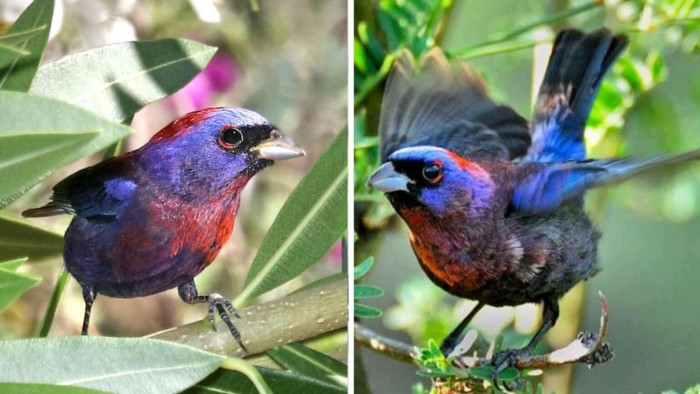
It is a sturdy bird with a very short tail. Males are only 4.3-5.5 inches long. They have a mosaic of rich plum, crimson, lavender, violet, cherry red, and blue,
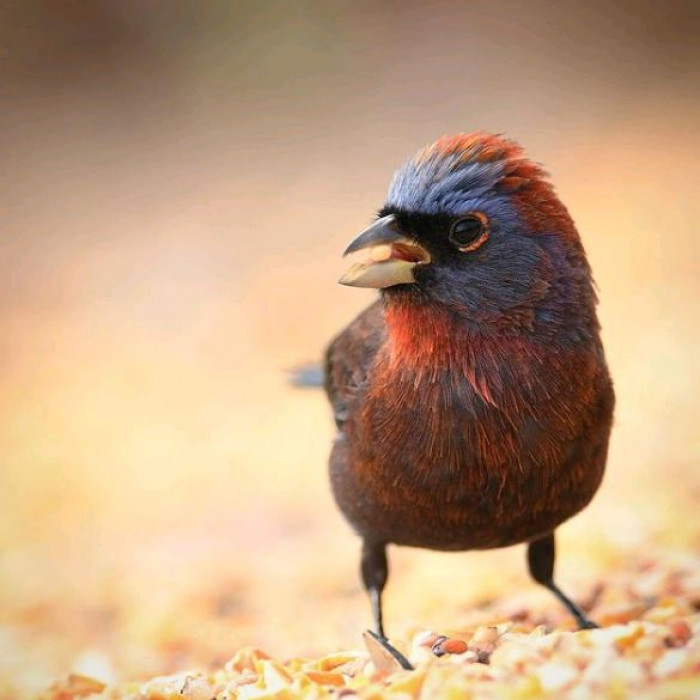
Varied buntings also face the challenge of cowbird parasitism, though not in the form of direct attacks. Cowbirds are parasitic creatures that reproduce by sneaking their eggs into other birds’ nests.
These crafty birds observe unsuspecting pairs, waiting for an opportunity when a nest is left unguarded. At that moment, they lay their eggs in the nest, often unnoticed. While some host birds may detect the foreign egg, others remain unaware of the intrusion.
The females and the young ones are light to chestnut brown and speckled with white.
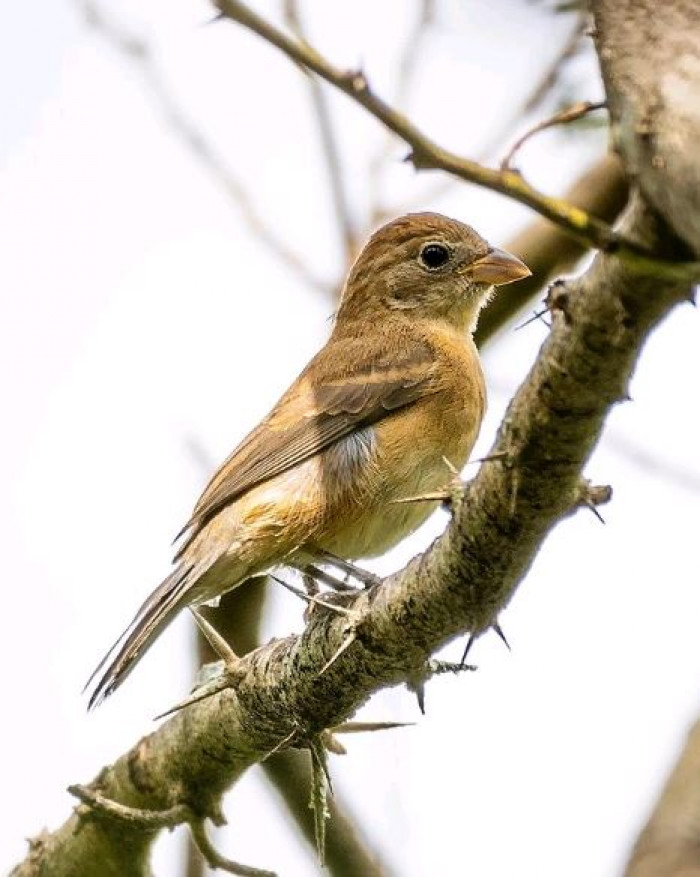
They live in Mexico, New Mexico, Texas, and Arizona.
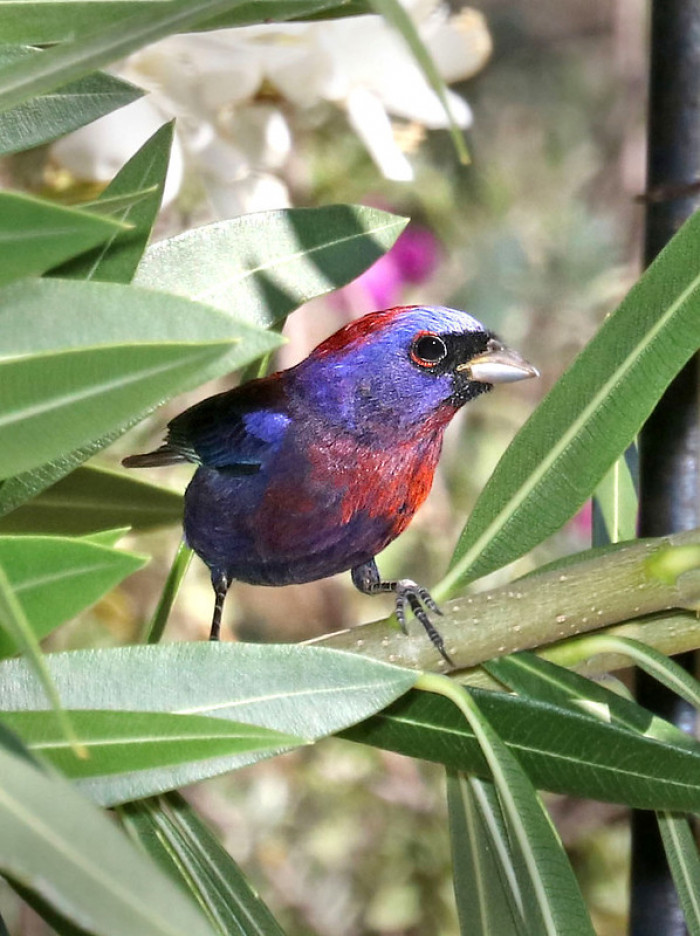
They prefer habitats with shrubs and bushes, often on steep slopes.
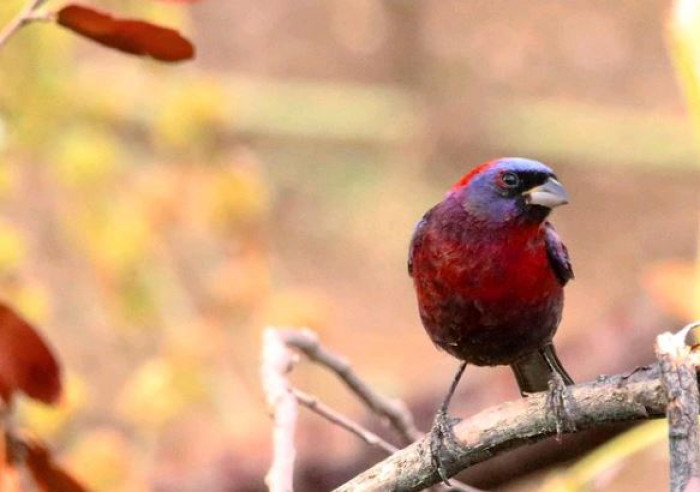
Varied bunting hunt insects but also eat fruit and any seeds they can find.
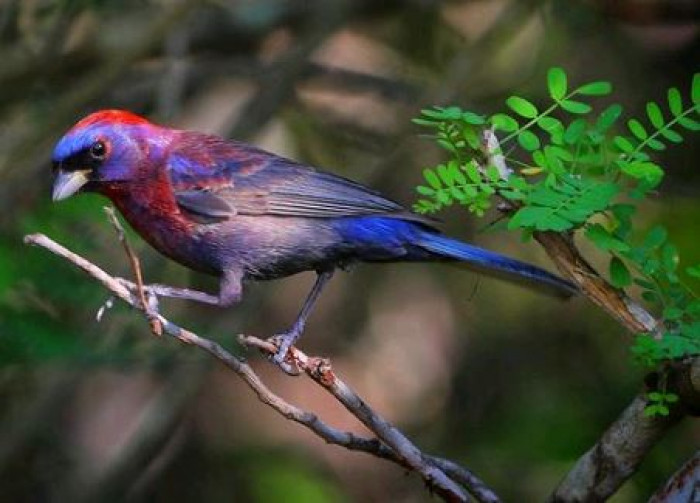
They begin nesting in late May through to early June.
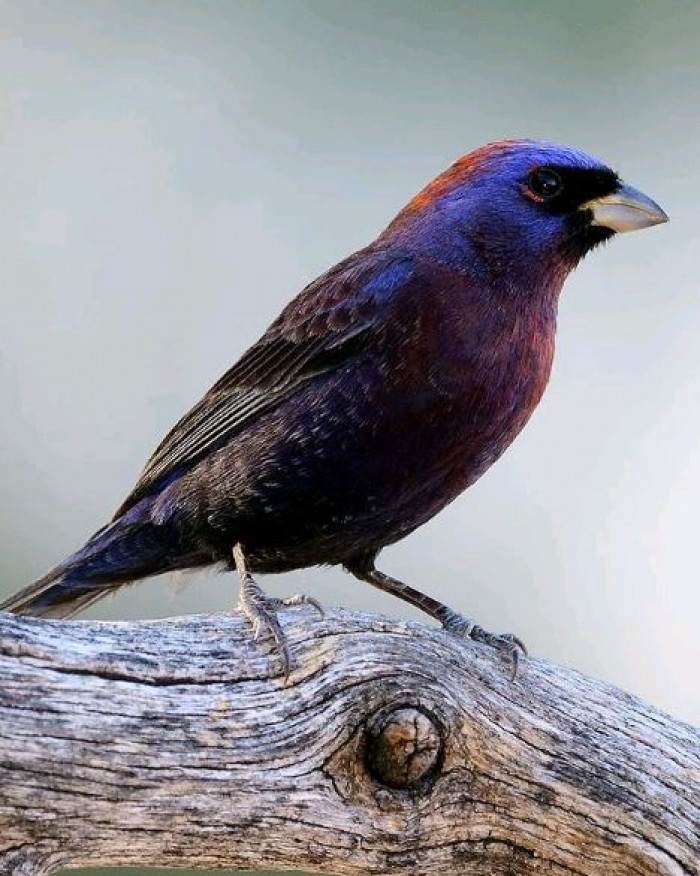
Their nests are cup-shaped and typically located near water.
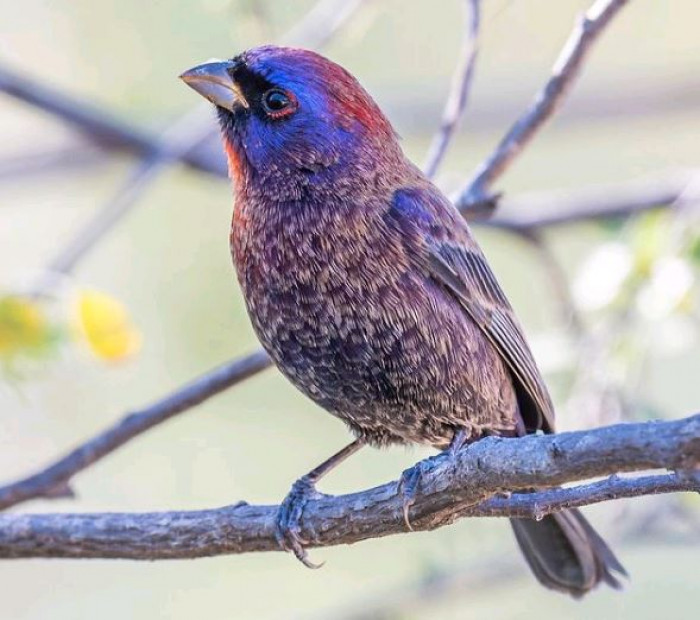
The females lay two to five blue-white eggs and incubate them for about two weeks.
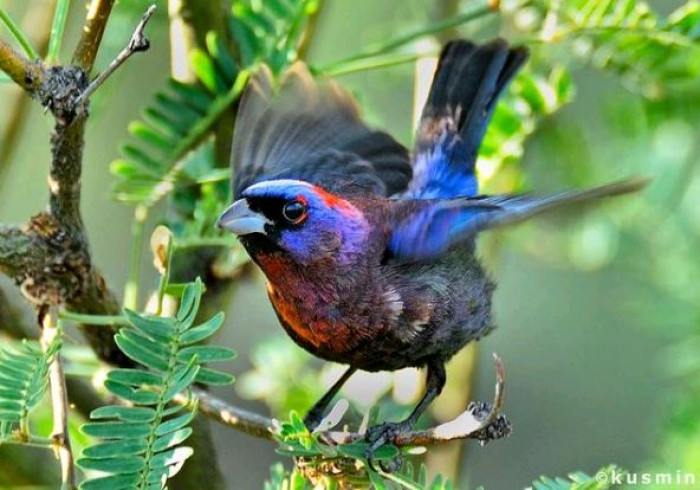
Watch and listen to the varied bunting here:
H/T: OneBirdCage
Due to their shy nature, much of the varied bunting’s behavior remains a mystery. However, it is known that they forage by moving through dense vegetation, twitching their tails and wings as they hunt for insects. Occasionally, they also consume cactus fruit or seeds.
Their foraging habits span different levels of vegetation, from the ground to shrubs and trees. They collect insects from leaves, seeds from the ground or stems, and berries from shrubs.
Typically, varied buntings forage in pairs or small flocks. During the spring and early summer, males are known to sing, adding a musical touch to the otherwise quiet environment.
